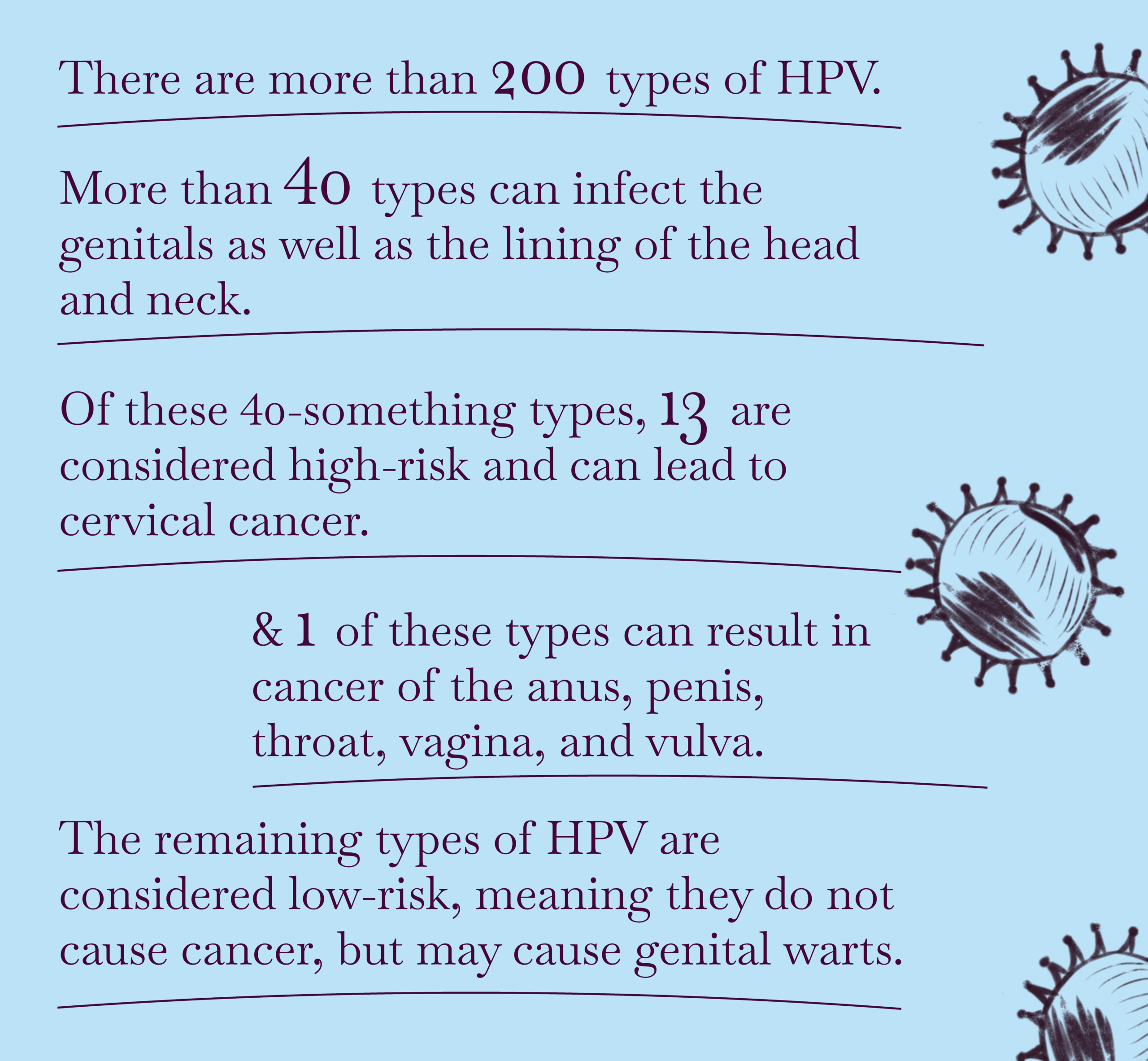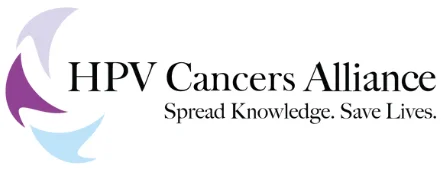What is HPV?
Human Papillomavirus, commonly known as HPV is a sexually transmitted infection (STI) which, according to the Centers for Disease Control and Prevention (CDC), “is so common that nearly all sexually active men and women get a strain of the HPV virus at some point in their lives.”
Let’s break it down.
HUMAN: Refers to the fact that this virus affects humans.
PAPILLOMA: This word comes from “papilla,” a Latin word that means “small bump,” and “oma,” a Greek word meaning “growth.” So, papilloma refers to a small growth or wart-like bump, which is a common symptom of HPV.
VIRUS: A virus is a microscopic organism that can infect living cells. HPV primarily infects the cells in the genital areas of the human body.
It’s Nothing New!
HPV has existed for thousands of years, evolving as a virus alongside humans. Originally diagnosed in animals in the 1930’s, by the 1970’s, Dr. Harald Zur Hausen discovered that HPV was causing cervical cancer. Today, we know that HPV can cause 6 different types of cancer and one rare condition (RRP).
Low-risk vs. High-risk HPV – What’s the Difference?

What Cancers can HPV Cause?
HPV can cause 6 types of cancer:
- Cervical Cancer
- Head & Neck Cancer (also known as Oropharyngeal Cancer)
- Vulvar Cancer
- Anal Cancer
- Penile Cancer
- Vaginal Cancer
- In rare cases, HPV can cause a condition called Recurrent Respiratory Papillomatosis or “RRP” – Learn more about RRP here.
What does HPV have to do with me?
Nearly everyone who engages in any form of sexual activity will contract HPV at some point in their lives. Vaccination is the #1 way to protect yourself from contracting high-risk HPV.

How does HPV spread?
- Sexual Contact: Vaginal, Anal, & Oral Sex (Regardless of gender identity/sexual orientation) —-> Extremely common
- Skin-to-skin contact: Such as deep kissing -—> Common
- Mother to baby: during childbirth, a mother with HPV can transmit the virus to the infant —> Less common
- Contaminated surfaces —> There is No Evidence that HPV spreads on surfaces!
Factors that may increase your risk of HPV:
- Not being vaccinated against HPV: the HPV vaccine protects against the most dangerous types of the virus, especially those that cause cancers and genital warts.
- New sexual partners: Engaging in sexual activity with multiple partners is NOT a bad thing! However, it may increase the likelihood of coming in contact with someone who has HPV (regardless of your gender identity or sexual orientation), especially if you practice unprotected sex.
- Damaged skin: The presence of open or punctured skin, especially in genital areas, can make you more likely to contact HPV if you come into contact with the virus.
- Compromised immune system: If your immune system is compromised by a disease such as HIV/AIDS, certain medication, or malnutrition, you are at greater risk of HPV infection.
What happens if I do get HPV?
So you got a positive Cervical Pap Smear, Anal Pap, or have a parter with HPV? It’s not the end of the world… A few things can happen:
- 1. Your immune system can usually get rid of the HPV infection on its own within 1-2 years. This means your body fights off the virus, making it go to sleep in your body (go dormant) and stop causing problems. If you catch a low-risk type of HPV, you might get genital warts, which can go away on their own or with treatment.
- 2. If your body doesn’t get rid of the virus, low-risk types of HPV can keep causing warts. High-risk types of HPV, however, can infect certain areas of your body (the cervix, vagina, anus, penis, or head & neck) and have the potential to turn into cancer.
The Bottom Line…about 85% of all sexually active people are infected with HPV at some point during their lives. There are ways to prevent HPV infection, but If you’ve already been diagnosed with HPV, there are many ways to prevent HPV from turning into cancer!!
